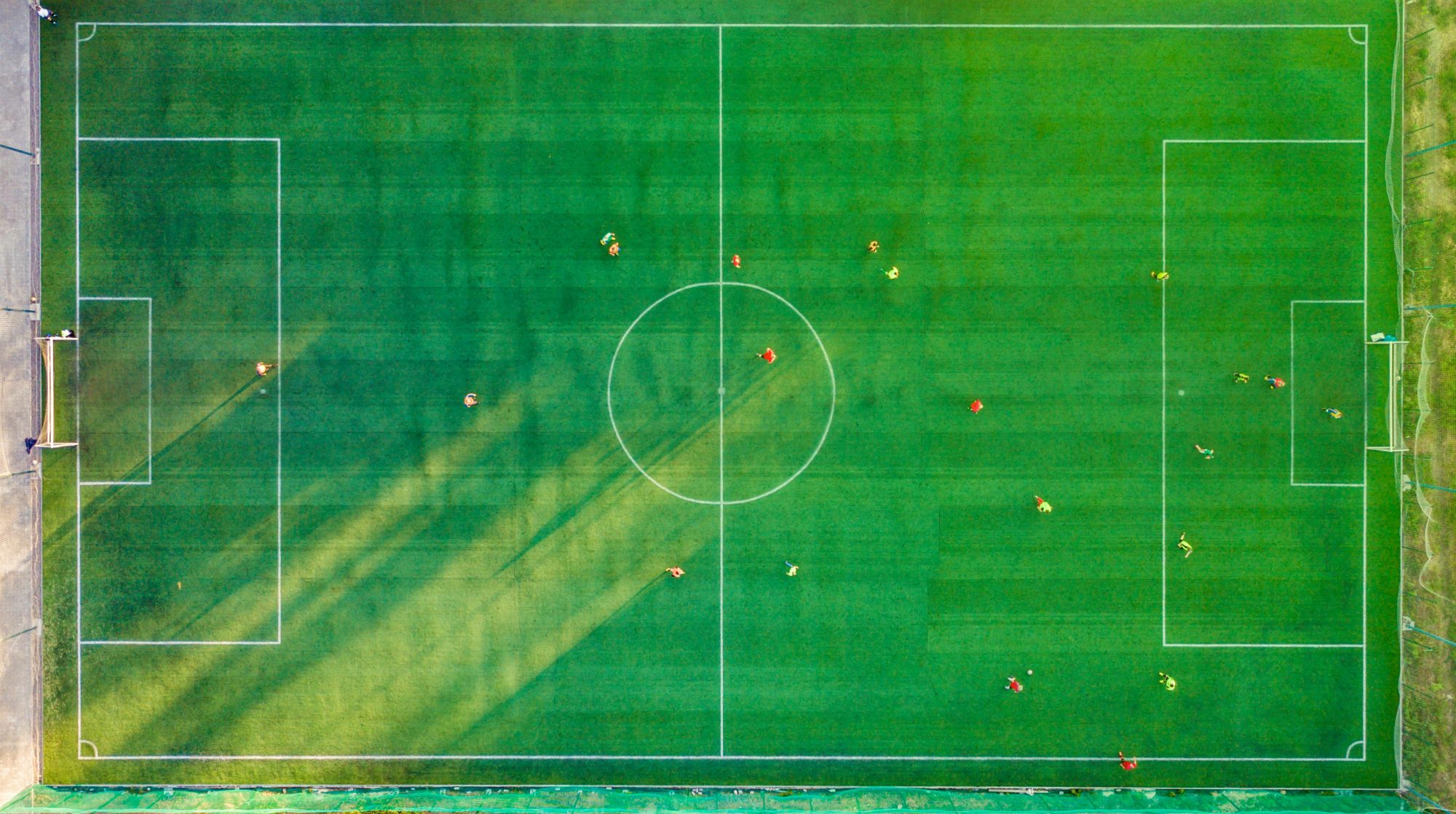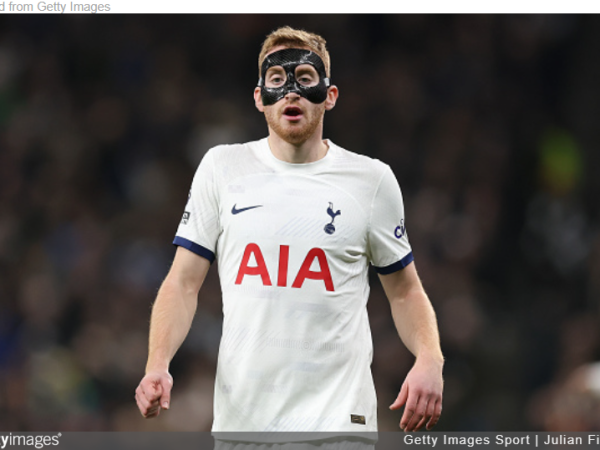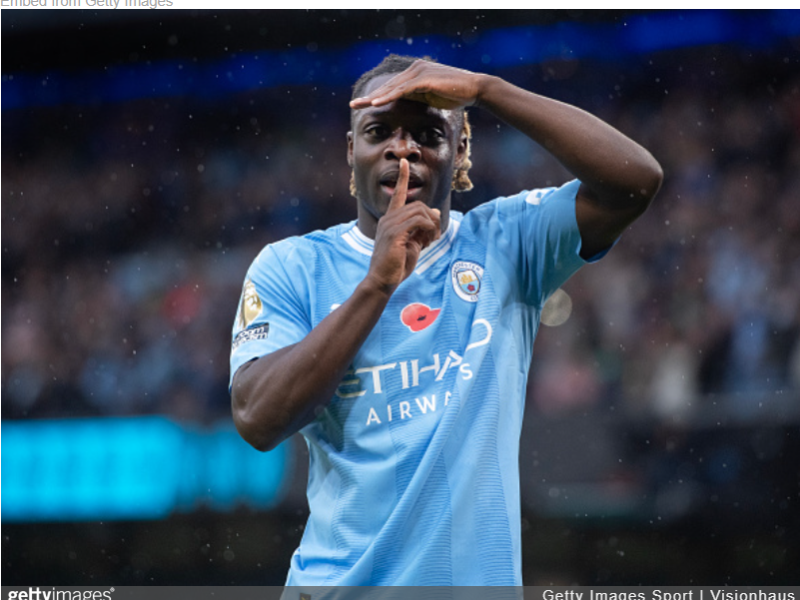In 2022, I established my ‘Role Continuity Evaluation System’, on the basis that players should be assessed by the metrics and traits important to their specific role on the pitch. Through this understanding, players are then classified into what is now 20 different roles, and assessed accordingly to see how they stack up to other players fulfilling the same player type. Here is an explanation of my scouting & analysis system, why I’ve coined it ‘Role Continuity’, and how I use the system to analyze fullbacks.
WHAT ARE YOU TALKING ABOUT, RHYS?
Embed from Getty ImagesRole Continuity might sound like a term from organizational psychology, but it’s actually taken from personality psychology. The theory is that personalities are formed not through the physical environments in which we live, but through the various roles we take up in society within our environments. The tasks that we do everyday become a major part of our identities, and even shape our personalities that we present to the world.
Embed from Getty ImagesTaking this over to a sporting context, the idea is that player traits, identities, and even “personalities” are formed through the roles they take up on the field of play for their teams. They develop those traits from being put into positions and roles to repeatedly harness them.

Further, when assessing these players and their actions on a pitch, we should not do what the free statistical websites do (I love many of these sites, don’t get me wrong!). A fullback should not be expected to perform the same actions as an attacking midfielder. Their performance in a match (or over the course of a season for that matter) should not be assessed in the same way as a goalkeeper. Instead, we should be assessing their metrics and performance based on what is actually important to them and their role.
Embed from Getty ImagesSo how do we then put players in specific roles, when a player’s role might change over time?
Through ‘role continuity’. Through what roles they frequently adopt for their team over time. Since we have metrics that are important to each role, this can be assessed both through data, and the eye test. The goal is then to provide quality analysis and in-depth player assessments that adequately cover the vast array of different tasks that they are to fulfill within their job description. Those ‘job descriptions’ have been formed via what players in those roles have been asked to do over time, and their repeated perpetuation of reaching higher on certain statistics over others.
Embed from Getty ImagesIn this series, I’ll be breaking down how I analyze and compare players within each of the twenty roles. This article is all about the discrepancies between the different fullback types in our player role system.
HOW I ANALYZE/COMPARE FULLBACKS
Embed from Getty ImagesFullbacks are broken down into three categories.
However, they are only separated in two when we create databases and do player comparisons.
Teams operating in a back-three will naturally have their fullbacks play like ‘Wing-Backs’. But even in a back-four, most teams will have at least one of their fullbacks be more advanced and attack-minded within their role, as the other holds a more reserved, defensive stance. Within this “defensive stance”, that player is often equally valuable to what they bring in possession, such as helping the team build out from the back or progress play from deep.

Some fullbacks don’t offer much in the way of progression and hold that reserved defensive role. But even those players take up similar positions on the field as our ‘Inverted Fullbacks’. This is why the ‘Inverted Fullback’ and the ‘Defensive Fullback’ are clumped together. Whether they prioritize possession or prioritize defending, they’re going to be operating in the same areas of the pitch, in the same (or similarly) reserved stance. In combining these two player prototypes and assessing them by the same metrics, we have a similar assumption as we did for the ‘Sweeper Keeper’ vs. ‘Shot Stopper’ debate.
- Purely ‘defensive’ fullbacks are more rare in the modern game, and will be seen as more limited in what they offer.
- A club eyeing up a ‘Defensive Fullback’ will therefore be equally interested in whether or not they can still fit into a team’s possession-based principles, and impact build-up within that reserved role.
Even ‘Wing-Backs’ will need to still shine on the defensive end, and in possession. But the priority is placed on what they provide in the attacking end of the game.

But another layer of complexity exists in this debate. As these back-three builds become so common, many teams operate with what is actually a centre-back at fullback. Pep Guardiola has been the one to receive all the claim for this invention and innovation, but it’s been going on for years as teams strike a balance within their teams. Bayern’s use of Benjamin Pavard is one such example, as he’s made a name for himself as one of the best right-backs in the world, despite not really being a right-back.
Embed from Getty ImagesThe Canadian Premier League equivalent is one of my favourite players, Rezart Rama. He’s built like a centre-back, but so outstanding with his pace, power, and ball progression, that he’s made for the ideal player to have in that back-three build for Forge, which then makes him a right-back out of possession.

Since these players prioritize possession within their fullback role, we count them as ‘Inverted Fullbacks’. The much more rare form of this prototype is the much more famous – one that inverts into central midfield. Trent Alexander-Arnold or John Stones stepping into midfield from fullback is oh so fun, but it’s also oh so rare when comparing players and putting them into databases.

So this player type is simply a player that holds a more reserved, centralized role in-possession and then becomes a full-back out of possession. The roles of Kyle Walker, Nathan Aké and even Andy Robertson at the end of 2022-23 are examples of that more common type of ‘Inverted Fullback’ in our evaluation system, as they hold that reserved role centrally in the team’s build.

As this becomes more common, we’re likely only going to see more centre-backs in the ‘Inverted Fullback’ role, since it’s essentially a third centre-back. But then what about the other side? Wouldn’t Ibrahima Konaté be the same player role given that he’s also an outside centre-back in possession? No. He becomes a centre-back out of possession. This player tends to be the more ‘physical’ of centre-backs, but one that also stands out for what they offer on the ball, and thus pushes higher or wider than the sweeper in the side. But they are not a full-back within their stating position and are not part of this classification! Not like Achraf Hakimi!
Embed from Getty ImagesBut in adding another layer to this equation, we also aim to establish some sense of how successful the player has been for their team in their league. Leagues are given a score based on difficulty of league and quality of the play. This feature was added to the system based on discussions with an analyst at a pro club in Canada. Thanks Liam!
Embed from Getty ImagesSuccess of the team is also measured by a variety of metrics, such as wins/losses, goals for/against (and xG-xGc), clean sheets, and league standing. This was added to the equation right from the start of establishing RCES, on the recognition that individual player statistics won’t always give the strongest sense of what players might actually be worth scouting (or praising), especially not first without utilizing the eye test. These scores demonstrate to pro clubs that players have accumulated success in a successful team, just like they’re aspiring to be.
Embed from Getty ImagesIf you’re interested in the specific metrics used for fullbacks in our analyses/player comparisons, simply reach out. We work with pro clubs to establish comprehensive scouting databases based on their ideal prototypes for each role.
CLUBS – SCOUTING DATABASES
We work with clubs through a linkage between data and video analysis, assessing potential prospects around the club’s specific principles of play and needs. In doing so, we create comprehensive databases that continuously allow clubs to identify players that suit their needs, and strategically plan for the future. To discuss what this would entail for your club, reach out.
Now of course, data is not the end point. Players are then assessed through the eye test and video analysis, where player reports can be created for the club. This is the most essential phase of the scouting process. I’ll be providing a few articles about how I use Wyscout and their video clips for my analyses and player comparisons, and how I use the eye test to compare the exact same features I scan for in statistical analyses.

I’ll also be breaking down how I analyze players in all of my player roles in the next few weeks. In the meantime, you can check out a few examples of our ‘Role Continuity Evaluation System’ in action. Thanks for reading and see you soon!
-> Canadian Premier League – Player Power Rankings
-> Explaining the Defensive Fullback – Player Role Analysis
-> Explaining the Inverted Fullback – Player Role Analysis
-> Explaining the Wing-Back – Player Role Analysis
YOU MIGHT ALSO ENJOY…
Game of Numbers #36 – Role Changes for Dejan Kulusevski & Konrad Laimer
One thing is for certain. Spurs have not been the same since injury to James Maddison. Spurs were flying high with no signs of slowing down at the start of the season. But injuries across the squad have since stunted their progress and made for a more difficult second half of the first half to…
Game of Numbers #35 – Anthony Gordon’s embodiment of the Newcastle way
Newcastle United have been defined in the Eddie Howe era by energy and intensity, including an all-out press, and fervid counter attacking immediately upon regaining possession. Anthony Gordon perfectly embodies the Newcastle way under Eddie Howe, and has been one of the surprise stars of the 2023-24 season. Many scoffed at Chelsea’s interest in the…
Game of Numbers #34 – Dribbling lessons from Jérémy Doku & Midge Purce
Gotham FC finished the 2023 NWSL season in sixth place, narrowly scraping into the playoffs on goal differential over the Orlando Pride. They were far from the favourites to make the playoff final, let alone win the whole thing over a star-studded team like OL Reign. Yet thanks to a double-assist from Midge Purce, the…
GET IN TOUCH WITH RHYS & LEARN MORE ABOUT TMS!

I am currently accepting new clients in my coaching & mentorship program. I work with coaches and players from around the world! If you’re interested in learning more about my site or experiencing my coaching, feel free to reach out! 👊⚽
rhys desmond – founder of themastermindsite
Across the past decade, I have worked with thousands of players and coaches across multiple sports and disciplines. I recognize the value of diving deeper beyond the first glance, and uncovering the deeper-lying ways to enhance performance. I make a commitment toward positive reinforcement, research-backed insights, and making the experience fun for those that work with me.




